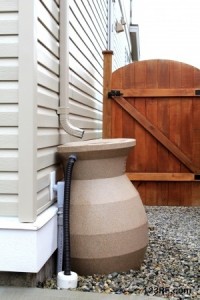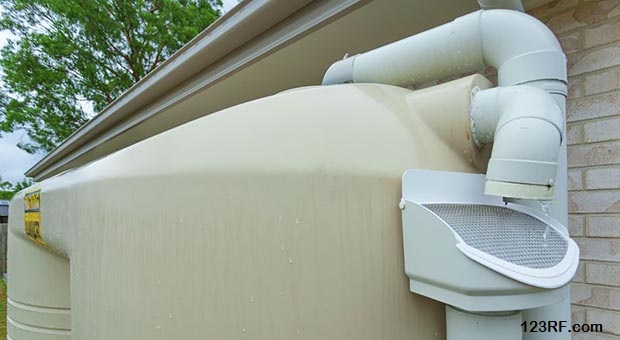Rainwater is an excellent source of free water, or so you’d think, right? Apparently not, though. For example, some Western states including Utah, Washington and Colorado outlawed home owners from collecting rain water on their own properties. According to the good’ ol government, the water that falls from the skies belongs to someone else and you’re essentially stealing if you collect it. So check your laws before moving forward.
Well, that being said, collecting rain water can be very important for your survival, if SHTF and your regular water supply runs dry. In a societal collapse scenario, don’t expect for the regular chains of supply, i.e. utilities like power, gas or water to work efficiently, if at all. Therefore, survival will be up to you.
A clean and reliable source of water is absolutely critical when it comes to survival. You can last for weeks without food, but without water, you’ll kick the bucket in a matter of days (three-four days tops) and you’ll be non-functional within just a couple of days.
Now you can see how rainwater collection can become a survival issue. In normal times, the average American uses almost 100 gallons of water per day (according to the US Environmental Protection Agency).
In reality, though, you only need just about a gallon to survive if you’re just going to drink it. Plan for another 1-3 gallons for hygiene purposes. Still, that’s a lot of water to save in buckets or gallons if you’re stockpiling for a month or even a week.
Collecting and storing rainwater may sound weird for all of us that are used with wasting water on a daily basis, since water seems to be an abundant resource at the present time. However, if SHTF a rainwater collecting system will be an excellent (and maybe the only) alternative for providing you and your family with good quality water for drinking, cooking, and hygiene.
You can use rain water for various purposes : besides drinking, rainwater can be used for washing your clothes, feeding your live stock and even to flush your toilet.
 Harvesting Rainwater
Harvesting Rainwater
Now, if you choose a dedicated rainwater collecting system, which is very easy and straight forward to build, you can DIY from readily available materials.
Its advantages, besides providing you with a good quality water source, are its simplicity of construction, the ease of maintenance and its convenience.
Though it may sound simple, harvesting rain water is not as simple as putting a bucket under your gutters; things are actually a bit more complicated than that. To begin with, contrary to popular belief, rain water is not as pure as an angel’s tears.
The air is filled with pollutants nowadays, not to mention the filth that lies on your roof (you’ll harvest the rainwater from your roof, generally speaking) : dead bugs, birds feces, dust, arsenic, lead, and a variety of other not-so-delicious toxins accumulate up there and will run right into your bucket along with the rainwater.
Filter it First!
Depending on the type of the roof you have, you must filter the rain water thoroughly. Only if you have a steel/glazed tile roof, you can collect rain water without filtering it. A roof made of asphalt shingles, concrete tiles or galvanized metals will require you to filter the water before storing it in order to remove debris. We recommend filtering it regardless of what type of roof you have.
Aside from the rainwater collecting system, you should also consider investing in a high quality water filtration system. Or you could use natural water purification methods as described in one of our previous articles.
If you already decided to collect rain water directly from the roof, remember to let the rain to wash your roof for 10 minutes before starting to collecting it; that way you will prevent larger debris and at least a layer of contaminants from getting into your water supply.
You should use a screen to capture the larger particles from the water, like leaves and bugs. In the next step, if necessary, you will use a dedicated water filtration system before storing it.
The rainwater should be stored for later use in a 50+ gallon barrel. You don’t need anything fancy: just a regular barrel painted black to minimize algae growth and to block sunlight. In a SHTF situation, it would be a good idea to hide your rain barrel from your neighbors or passersby using trees or plants. Hiding your stockpile from strangers is another article you should check out too.
This article has been written by Chris Black for Survivopedia.
About Chris Black
Chris Black is a born and bred survivalist. He used to work as a contractor for an intelligence service but now he is retired and living off the grid, as humanly possible. An internet addict and a gun enthusiast, a libertarian with a soft spot for the bill of rights and the Constitution, a free market idealist, he doesn’t seem very well adjusted for the modern world. You can send Chris a message at chris.black [at] survivopedia.com.




